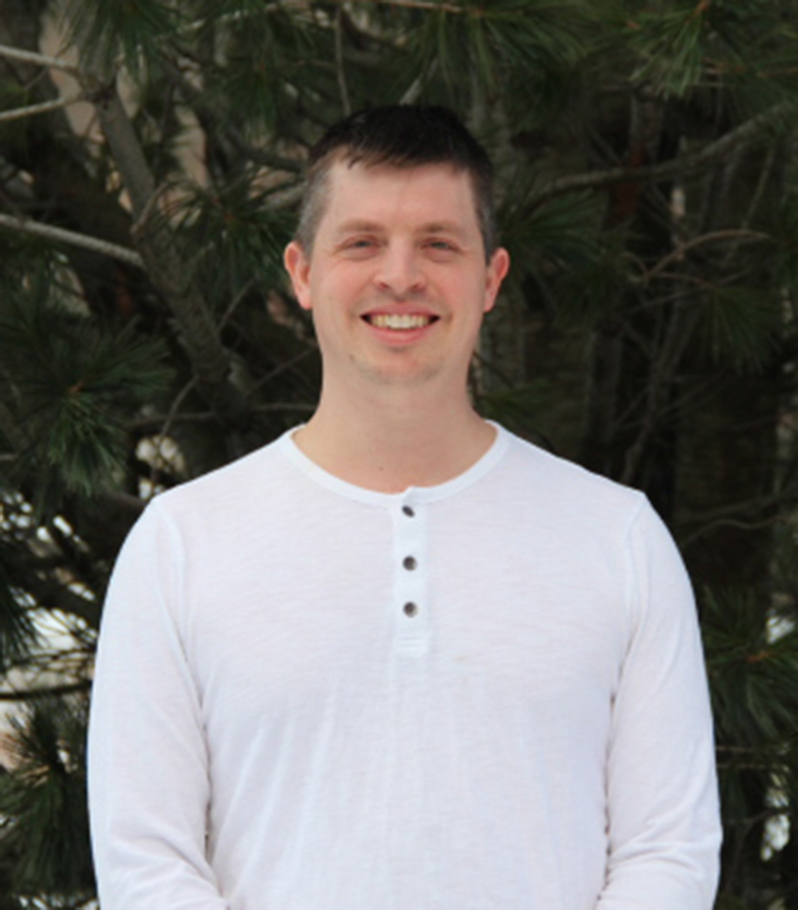J. Nathan Hohman
Assistant Professor
Department of Chemistry
Education
- Staff Scientist, The Molecular Foundry, Berkeley Laboratory, 2015-2019
- Postdoc, Stanford University, 2012-2014
- Ph.D., The Pennsylvania State University, 2004-2011
- B.S., Butler University, 2000-2004
Research Interests
Our research is devoted to the design and synthesis of nanomaterials and nanointerfaces for applications ranging from new semiconductors and superconductors to supramolecular coatings for defending against pathogenic viruses and microbes. We aim to leverage supramolecular chemistry—the weaker interactions between molecular building blocks—to engineer superior properties in matter. The laboratory focuses on synthetic problems of controlling where molecules go and how they interact with one another and their environment when they get there. We employ a wide range of characterization techniques including electron microscopy and contact angle goniometry to explore morphology and the interactions of surfaces with their environment to serial femtosecond crystallography utilizing an X-ray Free Electron Laser to explore the structure and dynamics of nanocrystals.
Making materials very small or very thin has been an easy way to prepare exciting new materials. For example, single layers from graphite or molybdenite (MoS2) have found new life as ultrathin 2D materials. But what if we didn’t have to thin them out and control them at the single layer? Through the use of hybrid materials like hybrid perovskites and metal organic chalcogenide assemblies (MOCHAs), low-dimensional nanostructures can be prepared that are part of a crystalline ensemble, unlocking new portions of the period table to the exploration of low-dimensional phases. Our key interests are related to understanding the origin of how structure leads to function in complex materials. We are also interested in learning how to solve the synthetic problems that will lead to the design of custom-built materials for new advances in sensing, batteries, photovoltaics, or advanced manufacturing. Other applications include adsorption, sensors, and battery materials.
Publications
Ultrastrong light-matter coupling in two-dimensional metal-organic chalcogenolates Anantharaman, Surendra B.; Lynch, Jason; Aleksich, Mariya; Stevens, Christopher E.; Munley, Christopher; Choi, Bongjun; Shenoy, Sridhar; Darlington, Thomas; Majumdar, Arka; Schuck, P. James; et al., Nature Photonics (2025), 19(3), 322-328
Ligand-Mediated Quantum Yield Enhancement in 1-D Silver Organothiolate Metal-Organic Chalcogenolates Aleksich, Mariya; Cho, Yeongsu; Paley, Daniel W.; Willson, Maggie C.; Nyiera, Hawi N.; Kotei, Patience A.; Oklejas, Vanessa; Mittan-Moreau, David W.; Schriber, Elyse A.; Christensen, Kara; et al. Advanced Functional Materials (2025), 35(6), 2414914
Nucleophilic Displacement Reactions of Silver-Based Metal-Organic Chalcogenolates Fan, Qiaoling; Willson, Maggie C.; Foell, Kristen A.;Paley, Daniel W.; Kotei, Patience A.; Schriber, Elyse A.; Rosenberg, Daniel J.; Rani, Komal; Tchon, Daniel M.; Zeller, Matthias; et al. Journal of the American Chemical Society (2024), 146(44), 30349-30360

| james.hohman@uconn.edu | |
| Phone | 860-486-9253 |
| Mailing Address | 25 King Hill Road, Unit 3136, Storrs, CT 06269-3136 |
| Office Location | Science 1 - MZ1021 |
| Campus | Storrs |
| Link | https://hohman.chemistry.uconn.edu/ |